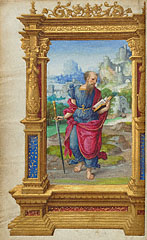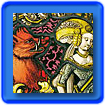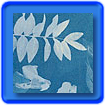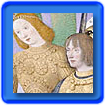Color in Renaissance Painting

|
|
Can you imagine a world without any colors in it? What would you miss seeing in color most? A person? An animal? A place? A favorite toy? Take a look around you. How many different colors do you see?
When an artist paints a picture like this one, deciding which colors to use is very important. Hundreds of years ago in Europe, in a time known as the Renaissance, artists chose from paints made from minerals, such as azurite and malachite, and plants, such as saffron and Brazil wood. Some colors had such expensive ingredients that they were saved for only special parts of a picture.
A deep blue paint was made by crushing the valuable gemstone lapis lazuli into a fine powder and mixing it with other ingredients. This costly blue was used most often for the clothing of the biblical Mary. If a picture included a woman wearing clothes painted with lapis blue, people understood it was probably Jesus's mother.
Artists in the Renaissance also used colors to create the appearance of three-dimensional space, which means making a scene look as if you could almost walk into it. The next time you are outdoors, try looking toward the horizon, or the point in the distance where the earth appears to meet the sky. Notice how the colors get lighter and lighter the farther away you look. Artists observed this too, so they used paler shades in the backgrounds of their paintings, as you see in this picture.

 |
 |
 |
 |
 |